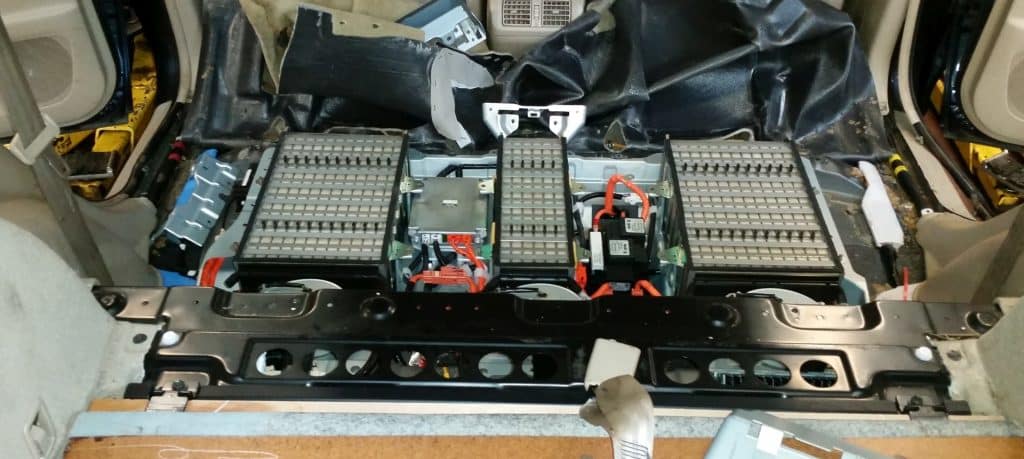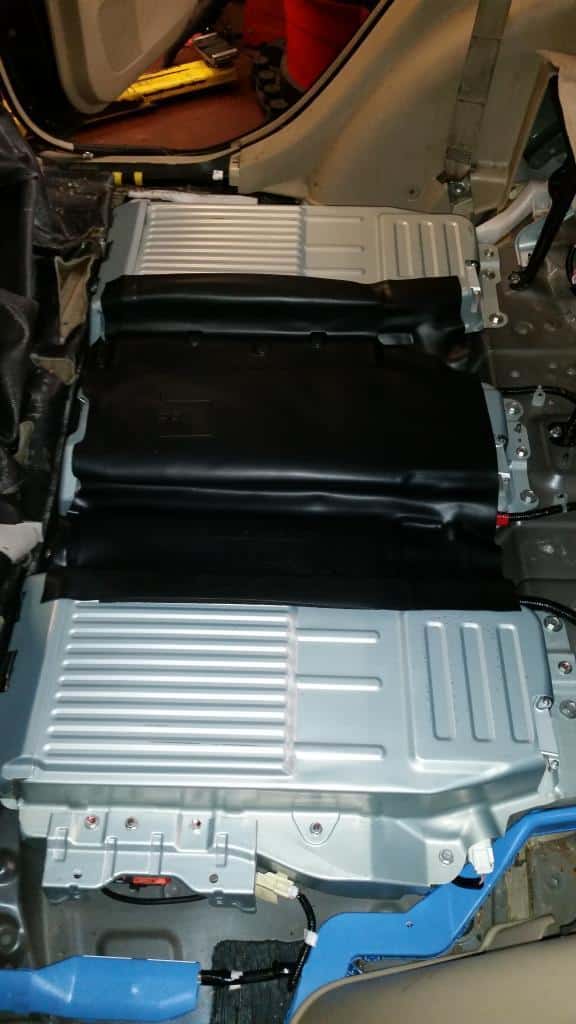This page details a Lexus Hybrid repair we’ve done a few times here. If water enters the remove the vehicle where the battery lives, it will cause the vehicle to break down. Most of the time this is caused by a leak in the body near the rear hatch struts, but we’ve also seen it caused by automotive detailing and spilling drinks.
Water leak causes P0AA6 INF 526 and 612
High voltage isolation
All hybrid and electric vehicles isolate the high voltage from the chassis ground. This is done to make the car safer. If the high voltage system was grounded through the chassis, contact with the car’s body and a high voltage component might result in a shock. The voltage used in hybrid and electric vehicles ranges from 144V to ~500V. Voltage above 60V DC or 36V AC can be very dangerous for we humans, so hybrids pack more than enough wallop to do us harm. High voltage insulation from chassis ground is one of the many safety measures incorporated to hybrid and electric vehicles.
Constant monitoring
The HV ECU or HV Battery ECU continuously monitors the resistance between the high voltage components and ground and will set a trouble code if the insulation resistance decreases below a threshold. A P0AA6 (or P3009 for older cars) is a code indicating a high voltage leak. When they say leak, they’re talking about high voltage coming in contact with chassis ground. You may be wondering why there aren’t sparks, smoke and burning like a downed power line. The reason is that if a high voltage element comes in contact with the chassis there is nowhere for the current to flow since the chassis is not part of the power supply system. It’s often really difficult for folks familiar with 12V chassis grounded systems to imagine a system that is not tied to ground, but that’s the way HV systems are set up.

The system main relay pictured here connects the battery pack to the inverter. It sits at the low point of the batter case and was sitting in a pool of water. Surprisingly it still worked while soaked, but the water created a short to ground.
Water is a good conductor. Well actually, pure water doesn’t conduct, but water as is exists in rain and from the tap conducts pretty well, especially when the voltage level is high. The 2006 and 2007 RX400h has the HV battery located under the seat, which is the low spot in the rear section of the car. If water is spilled or the body has a water leak, the water will pool at the center of the battery. Lexus considered this, and added a drain under the battery, but the drain has a filter, presumably to keep insects out, and the filter is easily clogged. This, coupled with a pattern problem of split body seams near the rear hatch strut mount causing a water leak in the rear of the car, has created isolation faults in many of the RX400h SUVs.

Lexus hybrid isolation fault codes
Before you can repair a Lexus hybrid, you’ll need to find out what’s wrong. Here’s how to interpret the freeze frame data.
P0AA6 has several information codes. Information or INF codes provides additional information. Some trouble codes have 20 or more INF codes, so the main code is often nearly useless without the INF code.
P0AA6 has INF codes 526, 611, 612, 613, 614, and 655. 526 sets with the P0AA6 on the first trip and does not indicate the specific area of the leak. After the car is shut off, the car will not restart, but when the driver attempts to READY the car, a self-test will be performed and a second INF code will set.
The second INF code will indicate the area of the leak:
- 526 = always sets. Not location specific
- 611 = AC compressor
- 612 = Battery case
- 613 = MG1 or MG2
- 614 = inverter or DC cables
- 655 = MGR
Since this story is about a water soaked battery, a P0AA6 526 and P0AA6 612 were found.
The fix is new system main relays (SMRs), which sit at the low point, a new drain, and a genuine Lexus tarp to lay over the top of the battery, and, of course, the water leak needs to be fixed.
The grommet at the low point of the floor is supposed to be a bit like a one way valve, but it fills quickly with debris and becomes plugged. If you’re in the Sunshine State, you may want to consider removing it.


